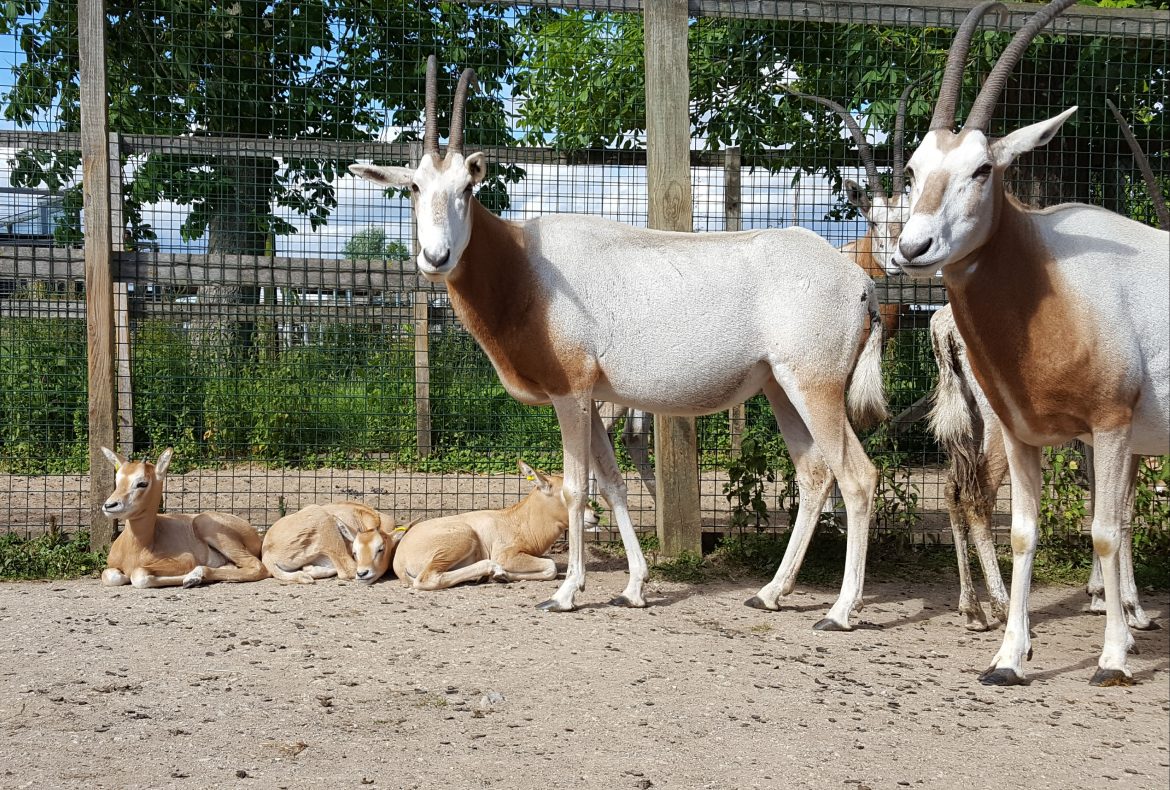Four New Scimitar-horned Oryx Calves Born

Recently at Flamingo Land we have had 4 scimitar-horned oryx calves born which means excellent news for the conservation of this species as they have been declared extinct in the wild since 1999.
The scimitar-horned oryx is named for its magnificent horns which are shaped like a scimitar sword. Both males and females are able to grow horns of up to 1.2 metres. They have white coats with reddish brown necks and marks on their face. In the wild their coat helps reflect the heat from the desert. Calves are born with a light brown coat which helps them camouflage in the sand. Their coat changes colour between 3-12 months.
They are well adapted to survive in their arid, desert habitat by having hooves that are designed to walk on sand. They can also survive without water for up to 10 months at a time. Their kidneys are specially adapted to produce little urine and they also sweat very little so they hardly lose any of their overall water intake.
They can form herds of up to 40 individuals. Expectant mothers will leave the herd after a gestation period of 8-9 months to give birth, returning to the herd after. Usually a single calf is born and they become fully independent around 14 weeks of age. Their diet consists of grasses, foliage and fruit which they may browse on in the cool of the morning or evening.
Once inhabiting a wide area in Northern Africa, the scimitar-horned oryx has been classified as extinct in the wild by the IUCN. Despite this species ability to survive in such harsh conditions, the decline of this desert antelope originally began due to climate change that caused the Sahara region to become dry and expand. Humans then expedited the loss of the species further by over-hunting for their meat and hide, along with trophy hunting for their superb horns. Other factors included habitat loss and competition with domestic livestock.
The loss of this incredible species triggered an amazing conservation effort and they have been part of a breeding programme where they are now well represented in zoos and safari parks across the world. Due to the successful captive breeding of these animals, some have already been released into protected areas in Tunisia, Senegal and Morocco.
Working together with the Sahara Conservation Fund (SCF), Flamingo Land plays an important part in the conservation of this species. The SCF aims to conserve the wildlife and habitats of the Sahara and Sahelian grasslands and has partnered with various zoos from around the world to help restore species back into the wild.


